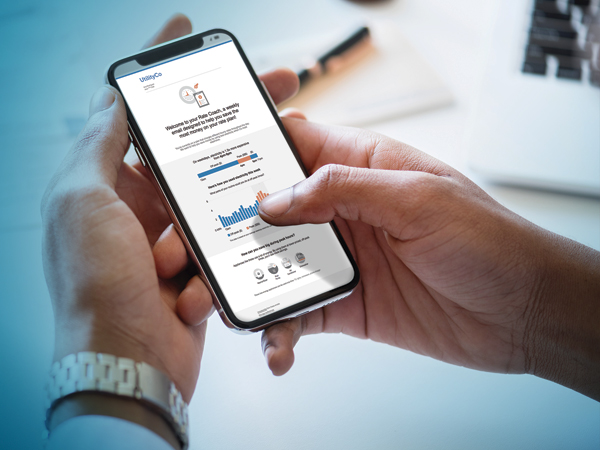EET&D Magazine recently spoke with Marisa Uchin, vice president, Global Regulatory Affairs, Oracle Utilitie, about the state of demand side management and what will continue to shape the market in 2019 — from home energy devices to electric vehicles.
EET&D – What is driving consumer demand to achieve 23TWh in energy savings?
MU – The digital revolution has enabled consumers to control everything from how they shop, to how they ride to work. Until relatively recently, however, they lacked the ability to effectively manage their energy usage to lessen both their environmental footprint and monthly costs.
Earlier utility programs focused on incentives such as rebates for energy efficient appliances — but those were limited by need and economic means. As such, the estimated efficacy of these programs is estimated to be as low as three percent. The introduction of customer engagement and energy efficiency solutions has democratized energy efficiency potential for every household, at any income level. As such, households can get a clear view of their energy usage and tips on how to be more efficient. Even small changes in behavior from thousands of households will add up to dramatic savings. In the case of 23TWh, that’s enough energy to power every household in San Francisco for 10 years!
EET&D – You first came across the concept of energy efficiency technology during your time at PG&E. What did you find the most intriguing about it?
MU – The ability to truly scale energy efficiency and bring the benefits to millions of consumers irrespective of income, age or other demographics was and remains for me really inspiring. Energy efficiency concepts have been around for decades, and to this day, program administrators such as utilities struggle to get the vast majority of their customers to participate in the programs for some of the barriers mentioned earlier. But we live in an era where we have tremendous amounts of data and the ability to use software, and capabilities such as machine learning and artificial intelligence to create personalized experiences that empower consumers to use energy smarter. In doing so, consumers use less energy and save money. That’s really powerful.

Photo credit: Oracle
EET&D – We have seen some ambitious goals for renewables this year from states such as California. Are state and federal regulations driving these kinds of energy efficiency programs?
MU – The majority of energy efficiency programs run by a utility or other program administrators are aimed at meeting policy goals — many set legislatively and some regulatorily — such as an energy efficiency resource standard or a greenhouse gas emissions reduction goal. Often the goals set on efficiency are to achieve a percentage savings of overall energy delivered by the utility. States such as Maryland, Colorado, New Jersey and New York are just some that have expanded energy efficiency goals over the last couple of years. And in states such as California and Hawaii that have pledged 100 percent renewable energy goals, energy efficiency will be a critical enabling resource in achieving those ambitious goals.
For energy efficiency programs, state public utility commissions — and in the case of municipal utilities the city or county councils — generally provide oversight of how programs are funded, ensuring they are a cost-effective, and identifying a mechanism to help the utility recover the cost of both running the programs and the resulting impact of selling less energy.
EET&D – Can you provide a few examples of utilities who are embracing these kinds of demand side management (DSM) programs today?
MU – Exelon’s utility companies (Atlantic City Electric, BGE, ComEd, Delmarva Power, PECO and Pepco) have been key innovators and collaborators in reaching the 23 TWh efficiency milestone. As part of their comprehensive Business Intelligence and Data Analytics strategy, the company is driving consumer engagement and conservation efforts with a multi-pronged approach that includes integrated energy management and efficiency, along with the first application of behavioral science in demand response. Their programs reach more than 3.6 million customers and have generated 2.85 TWh in total savings.

Photo credit: Oracle
National Grid is another great example. Since 2009, they have leveraged a range of energy efficiency programs to transform their relationship with customers and correspondingly improve their business overall. In 2017 alone, National Grid customers received more than 24 million personalized reports and 143,000 high bill alerts. The states where National Grid operates — New York, Massachusetts and Rhode Island — consistently rank in the top five states nationwide for energy efficiency.
These kinds of projects are also occurring across the globe — from work Japan’s Ministry of Environment which is engaging energy efficiency programs to help meet the country’s 2030 CO2 emission reduction goal, to BRPL which is currently testing the first large-scale behavioral energy efficiency program in India.
EET&D – How is the relationship between utilities and their customers evolving? What role will demand side management play?
MU – Energy distribution used to be a very linear equation. Households used energy, the utility sent them a paper bill — that was the extent of their relationship. As distributed energy resources — such as solar, electric vehicles and batteries continue to rise, and the installation of in-home devices, where customers can influence their load profile using mobile or home automation device communication continues to proliferate, consumers are becoming more active and in control of their energy footprint — both as users and producers. They are looking to their utility to help guide them throughout this journey as a trusted advisor and provide the clear, accessible, personalized insights they need to make more informed decisions.
Much like we saw in the communications industry moving beyond phones to content, music, etc.; consumers are looking for a frictionless digital experience from their utility. As energy consumers, they are seeking options and services from their utility providers that meet their interest and needs — which can range from transportation, self-generation, rate options for 100 percent clean energy, rates that optimize around their household schedule – the list goes on. But given that the average customer spends less than 60 seconds a month thinking about their utility provider, the window is small for utilities to engage customers and capture their attention. DSM programs offer a powerful solution for utilities to engage in a more direct and meaningful way with their customers and provide a contextually relevant, personalized platform to introduce these various options and services. Leveraging advanced analytics, machine learning and artificial intelligence, energy efficiency and engagement programs help identify highly relevant and personalized communications that will get customers to notice and take action. Providing this level of value beyond the meter will be critical as utilities move towards a more customer-centric grid model.
EET&D – Are consumers concerned about data privacy with these programs?
MU – Certainly, customers care about data privacy. And utilities, as heavily regulated entities, are highly focused on maintaining that privacy and securing their customers’ data. Utilities often are seen as slow to adopt the cloud, but we’ve seen a tipping point with our clients and regulators, where they see the value that the cloud can bring on a variety of levels, including keeping customer data secure.
EET&D – What role are consumer devices playing in getting consumers to change their energy behaviors?
MU – As I mentioned earlier, customers think about their energy less than 60 seconds a month. So, it’s critical that consumers are able to engage with their utility through the devices they are using every day — mobile phones, smart thermostats, voice-activated home devices, etc. While it remains to be seen if consumers will engage their smart-voice device in a conversation around energy savings at scale, there is a more immediate need for utilities to integrate with these devices. Call center volume and costs are a big concern for most utilities. We see a clear path to enabling utilities to use digital home assistants as an easier, frictionless and lower cost way to handle those conversations. In these interactions, there is also opportunity to lead customers to take actions that are best suited for their consumption patterns, such as adjusting their thermostat and then helping them to automate that going forward.
EET&D – You mentioned electric vehicles – which appear to be on the cusp of more widespread adoption. How will utilities manage this increase in demand?
MU – Electric Vehicles (EVs) are growing at a record rate — cracking the 400,000-barrier in the second quarter of 2018, a 77 percent increase from the year before, according to a report from Bloomberg New Energy Finance. While EVs are an important step forward in reducing carbon emissions, most electricity grids were developed long before EVs became a mainstream option for consumers. Utilities need to figure out quickly how they are going to manage this increased demand on an already taxed energy grid — but the first step is knowing which customers own them because many customers who purchase an EV don’t proactively notify their utility. Leveraging deep machine learning algorithms, select energy efficiency solutions can now identify and disaggregate the charging of an EV within a specific household, including the time and length of charging.
This kind of insight is critical to enable utilities to better plan for the energy infusion needed to power EVs at scale and make needed assessments on grid investments that need to be made to support this relatively new market, or conversely in areas with smaller concentrations of EVs, where investments can be delayed. In tandem, this intelligence will also enable utilities to become the trusted energy advisors we discussed prior — enabling customers to see exactly how owning an EV impacts their energy footprint and bill and engaging with them to charge at the time and rate that is most conducive to both themselves and the energy grid. In the future, these same kinds of engagement programs will even be used for utilities to buy-back unused energy from their customers’ EV batteries.
Vice President, Global Regulatory Affairs for Oracle, Marisa Uchin leads a global team that is responsible for expanding markets for the company’s utility solutions and shaping regulatory and legislative policy that advances utility investment in technology innovation. She has engaged as a utility and policy expert in multiple regulatory proceedings related to grid modernization, incentive-based ratemaking, utility business model transformation and demand side resource planning. Prior to Oracle, Uchin spent six years at PG&E, where she was responsible for policy strategy, communications and stakeholder engagement to shape California's energy efficiency market.






